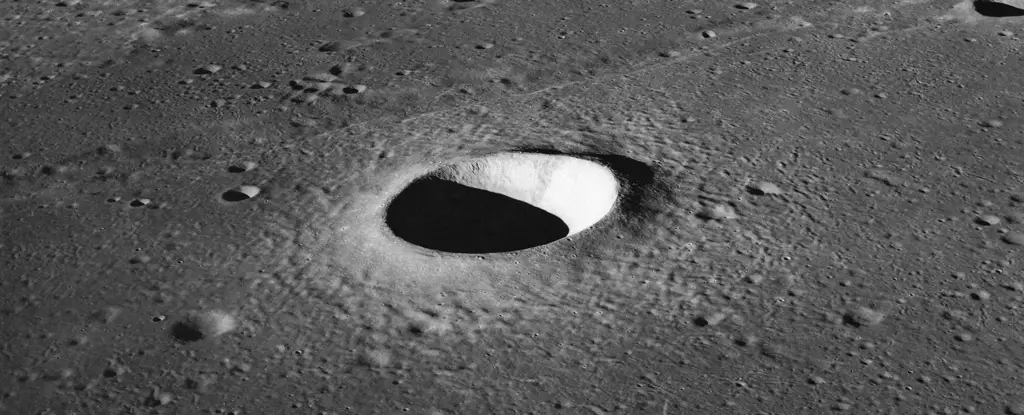The Moon, with its pockmarked surface adorned by craters of varying sizes—ranging from tiny pits to gigantic basins over 1,000 kilometers wide—provides a timeless window into the violent past of our Solar System. During the epoch known as the Late Heavy Bombardment, approximately 4 billion years ago, the Moon became a canvas of violent impacts as asteroids and comets bombarded its surface. This ongoing cosmic violence is a stark contrast to Earth, whose surface is persistently reshaped by erosion, weathering, and tectonic activity. The absence of an atmosphere and significant geological processes on the Moon means that these craters remain well-preserved, encapsulating a significant chapter of our solar history that is invaluable for scientific inquiry.
The Intriguing Journey of Lunar Material to Earth
The craters on the Moon serve not just as scars from past impacts but as evidence of a complex interaction between the two celestial bodies. When craters form, a portion of the ejected lunar material attains the Moon’s escape velocity and journeys across the vacuum of space to Earth. This intriguing phenomenon raises a vital question: How much of this material actually reaches our planet, and what stories do these lunar rocks tell? Recent research initiatives spearheaded by a team led by Jose Daniel Castro-Cisneros delve into these queries, utilizing sophisticated computer simulations to enhance our understanding of this material transfer process.
In a significant advancement over earlier studies, the research employs refined simulation techniques to track the trajectory of lunar debris over extended timeframes. This approach allows for a more comprehensive examination of the conditions under which lunar material can escape and make its way to Earth. Their findings emphasize the importance of understanding the dynamics of lunar ejecta, not only in comprehending the history of the Moon itself but also in connecting the dots within Earth’s geological and biological timeline.
Innovations in Simulation and Findings
By utilizing the REBOUND simulation package, the team meticulously tracked particles from the Moon for a staggering 100,000 years. This forward-thinking use of technology enables researchers to model the interaction between the Moon and Earth more realistically than previous studies, which tended to analyze one aspect in isolation. Instead, Castro-Cisneros and his team evaluated both bodies simultaneously, examining the complexities of ejection velocity distributions and how effectively lunar material escapes. Results indicate that approximately 22.6% of lunar ejecta finds its way to Earth within 100,000 years, with around half of these impactful interactions occurring in the initial 10,000 years post-ejection.
The study reveals a captivating relationship between lunar impacts and their resultant Earth collisions. This dynamic follows a power-law distribution, suggesting that there is a predictable pattern to the incoming lunar debris over time. Moreover, the research highlights that the location from which material is ejected plays a crucial role: phenomena originating from the Moon’s trailing side exhibit a significantly higher probability of colliding with Earth compared to ejections from the leading side. Such insights into lunar dynamics can reshape the way we regard the celestial relationship between these two colossal bodies.
The Mystique of Kamo’oalewa and New Patterns of Impact
Among the tantalizing implications of this study lies the mystery of Kamo’oalewa—a near-Earth object theorized to be a fragment of the Moon itself, measuring between 36 to 100 meters in diameter. Understanding how such bodies interact with Earth not only enriches our comprehension of the Moon’s impact history but also supports the hypothesis for the lunar origin of various near-Earth objects. This research serves to reinforce our perspective on these cosmic bodies while unraveling the intricate connection we share with our lunar neighbor.
The findings concerning the concentration of impacts near the equator offer a newfound appreciation for the Earth’s dynamic atmosphere and surface conditions. Interestingly, the collision distribution remains nearly symmetrical, favoring early morning and late evening timeframes. This detailed exploration of when and where lunar material impacts Earth enhances our knowledge of the Earth-Moon system’s shared history—a narrative much more complex than previously understood.
As researchers continue to unveil the Moon’s internal and external connections through innovative simulation techniques, we edge closer to comprehending the vast temporal and spatial dimensions of our cosmic abode. The Moon is not merely a barren satellite; it is a pivotal player in the ever-evolving saga of life and geology on Earth.


Leave a Reply